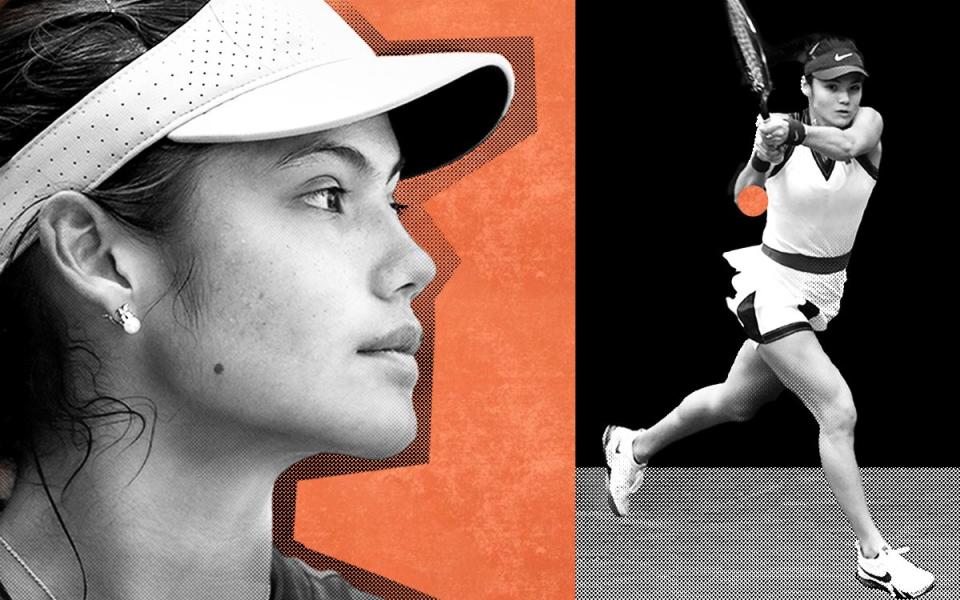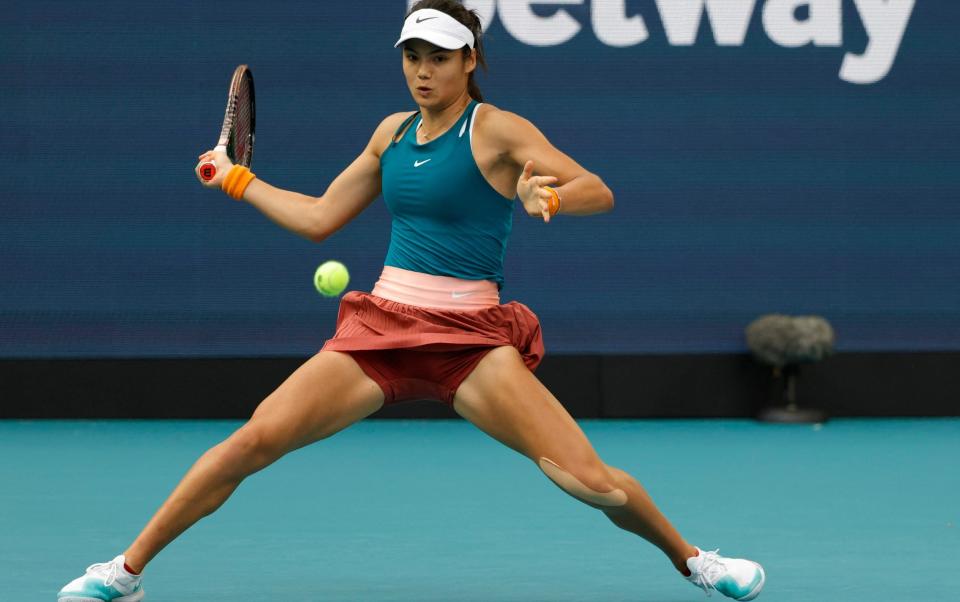How Emma Raducanu can find her feet on clay

Emma Raducanu has been all over tennis Twitter this week. Practising her sliding, playing a warm-up game called “Spikeball”, and working on her return of serve.
The interesting thing about those clips wasn’t what Raducanu was doing. Rather, it was the ochre-coloured background. She and the rest of the British team are in Prague to face the Czech Republic. And the Czechs – not unexpectedly – have chosen clay as their preferred surface for the tie.
Now, everyone knows that British players tend to be vulnerable on clay. We just don’t play enough on the stuff. But Raducanu takes inexperience to a new level. Three weeks ago, she was asked about the upcoming clay-court season, and replied “It's gonna be interesting, because I haven't played on clay in four years. I'm not sure how that will go.”
Playing a long game
How does clay differ from other surfaces? “You’ve got to be prepared to stick at it, to stay in the point longer,” says Nick Brown, a British commentator and former Davis Cup player. “The surface slows the ball down so that your good shots come back. It’s physically gruelling: more arduous and draining than any other form of the game. And that can find you out mentally a little bit.
“You can’t hit through people unless you have exceptional weight of shot, like a Maria Sharapova or a Jelena Ostapenko [who have both won the French Open in the last decade]. So you have to use the angles more, change the pace. The drop-shot is a massive thing on clay.”
All this couldn’t be more different to the conditions in which Raducanu prospered last year, first at Wimbledon and then at the US Open. Those are the two fastest tournaments of the season. They prioritise first-strike tennis, in which one strong shot – delivered early in the rally – tends to be decisive.
On clay, most players need to use at least a one-two punch, working their opponent out of position to open up the space for a putaway. Clay-court maestros like Rafael Nadal are almost like chess grandmasters in the way that they construct a point.
📍 Prague
🏆 @BJKCup
Straight from the plane to the court for @EmmaRaducanu, @Katieswan99 & Sonay Kartal with a spot of @Spikeball on the menu#BackTheBrits 🇬🇧 pic.twitter.com/VK6I7Z5QVn— LTA (@the_LTA) April 11, 2022
Advancing up the court
Assuming you are not a Sharapova or an Ostapenko, you can still win on clay by being a creative artist with a wide palette of shots and spins, like Tunisia’s Ons Jabeur. Or you can move so well that there is no path past you, like Simona Halep or the new world No 1, Iga Swiatek.
Athleticism is one of Raducanu’s key strengths. One would expect her to master the sliding movement required by clay, even if it might take a while. But she will need to improve her physicality. She recently admitted to being “dead” in the second set of matches – an issue that may stem from the Covid infection which ruined her off-season training block. This does not augur well for the next six weeks.
And neither does Raducanu’s favoured court position, which is close to the baseline. She prefers to hang close to the playing area, squatting down to meet deep balls on the half-volley rather than retreating in the textbook manner. This approach has worked to her advantage on other surfaces, because an advanced court position is more effective at taking time away from your opponent than a heavy weight of shot.
It saves time twice, both as the ball comes to you and then as it goes back across the net. But baseline-hugging tennis is almost impossible to pull off on clay. For one thing, the ball bounces up more steeply; for another, the slightly irregular surface leads to more shanks and mis-hits. Most good clay-court players are expert at transition, at moving back and forward as much as right and left.
Again, this puts more miles in the legs and will ask questions of her stamina. The other key attribute of many expert dirtballers is an ability to use heavy top-spin, which kicks up and forces opponents back towards the stands. Again, this is less than encouraging for Raducanu, who hits a relatively flat ball. But it would seem unwise to try to tinker too much with her technique for this short period of the season. Raducanu’s flat ball skids through quickly on grass, which arguably is her best surface.
Better to accept that the clay-court swing is something of a “Hail Mary”, while keeping the main focus on home-advantage tournaments such as Birmingham and Nottingham in early June.
Harnessing her underdog status
All this might sound like doom-mongering. There are certainly plenty of tennis folk who believe that any victory on clay – even a first-rounder – will represent a minor triumph for Raducanu. But let us try to find some positives.
For a start, Raducanu should feel a dramatic reduction in expectation levels. Many feel that her lack of endurance in recent matches has been exacerbated by stress. She knows that she is in the spotlight as she tries to live up to her unprecedented feats of 2021. As a result, her body tightens up, and she becomes prone to early exhaustion. The clay-court swing will be different.
No one can realistically expect much of her on clay, and this can be very freeing for a player. One other minor detail is that she has been struggling with her serve, making technical tweaks and lacking rhythm or confidence. On clay, that becomes less of an issue, because there are hardly any women who serve hard enough to win easy points on this surface. For the vast majority of the field, the serve simply becomes a way of starting the point – and that should be a great leveller. It is also true that Raducanu is hardly the only woman without a clay-court pedigree.

There will probably be 40 players in the first round at Roland Garros who look suspiciously at the red granules and think – as Nick Kyrgios once said – “the French Open sucks compared to Wimbledon”. If she draws one of those, things might look up quickly.
Raducanu said last month: “Clay could be a strength of mine.” That may be true in the long term. She is an extremely bright and resourceful player, who will surely work out ways of using clay’s peculiar attributes to her advantage. But this year’s matches may have come too soon.
Follow the Konta blueprint
It is worth looking at the example of Johanna Konta, Raducanu’s predecessor as British No1. For most of her career, Konta looked as uncomfortable on clay as if she were playing on broken glass. And then, suddenly, she cracked it.
Having never previously won more than five clay-court matches in a season, Konta abruptly reached the finals of Rabat and Rome in 2019, before coming within a couple of nervy drive-volleys of making the French Open final too.
This was an extraordinary transformation, which recalled Tim Henman’s equally unexpected run to the semi-finals of Roland Garros in 2004. Until 2019, Konta had been known as a rhythmical baseline hitter who lacked variety or touch. But now, out of nowhere, she developed a killer drop-shot.
Konta’s 2019 season, like Raducanu’s 2021, demonstrates one of tennis’s eternal verities: anything is possible when you get on a roll.
“Emma just needs to buy a win from somewhere,” says Brown. “Once she has a bit of momentum, a bit of confidence, we’ll start seeing some of the thrilling tennis she came up with last year.”
